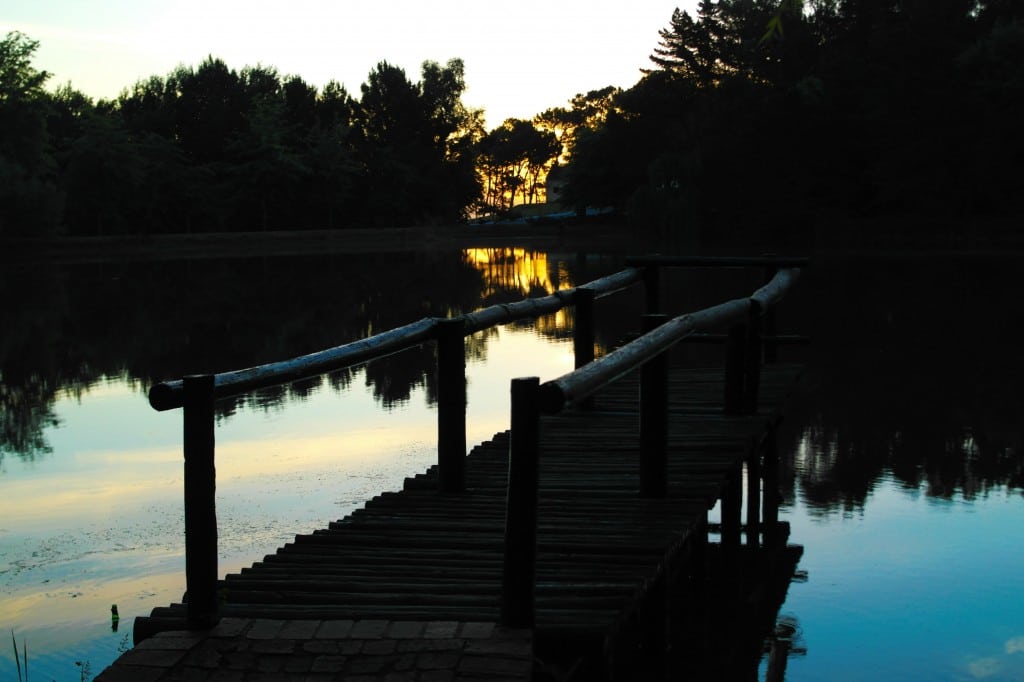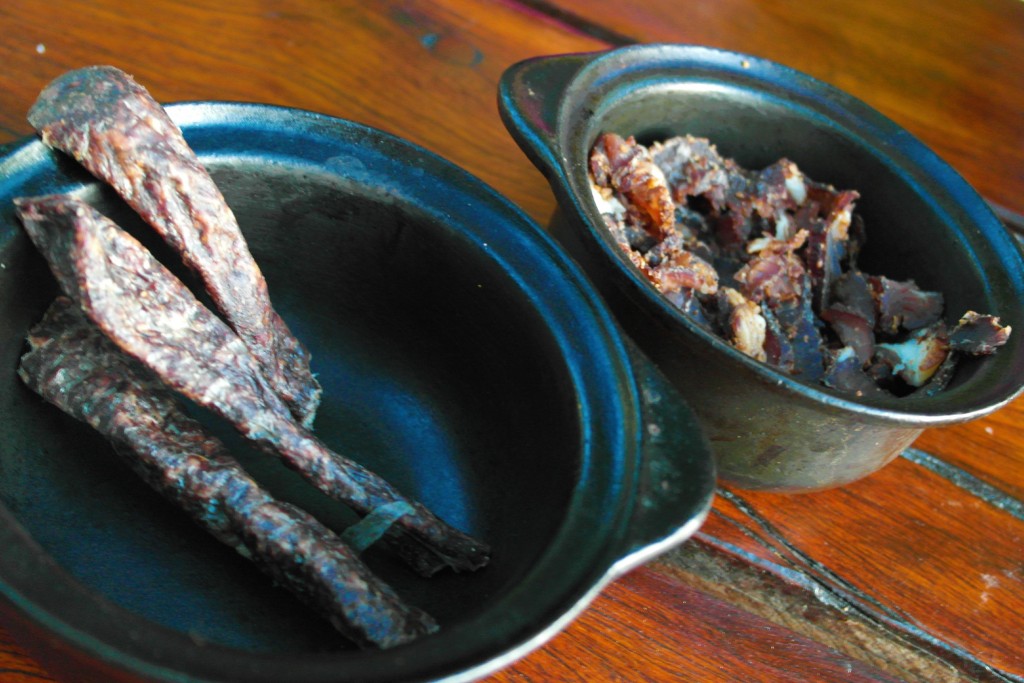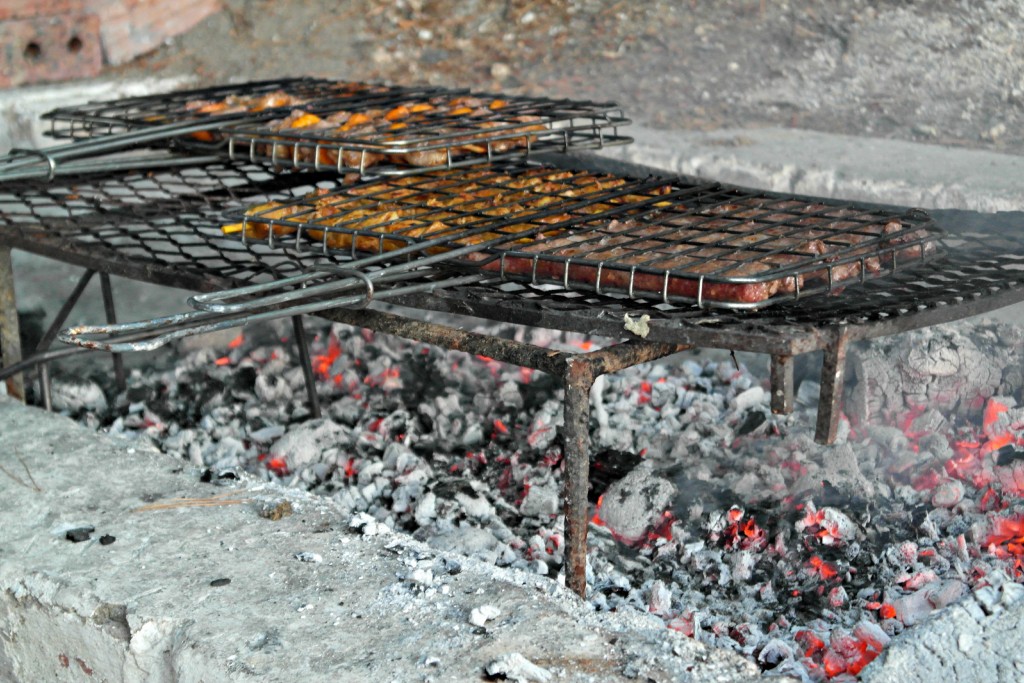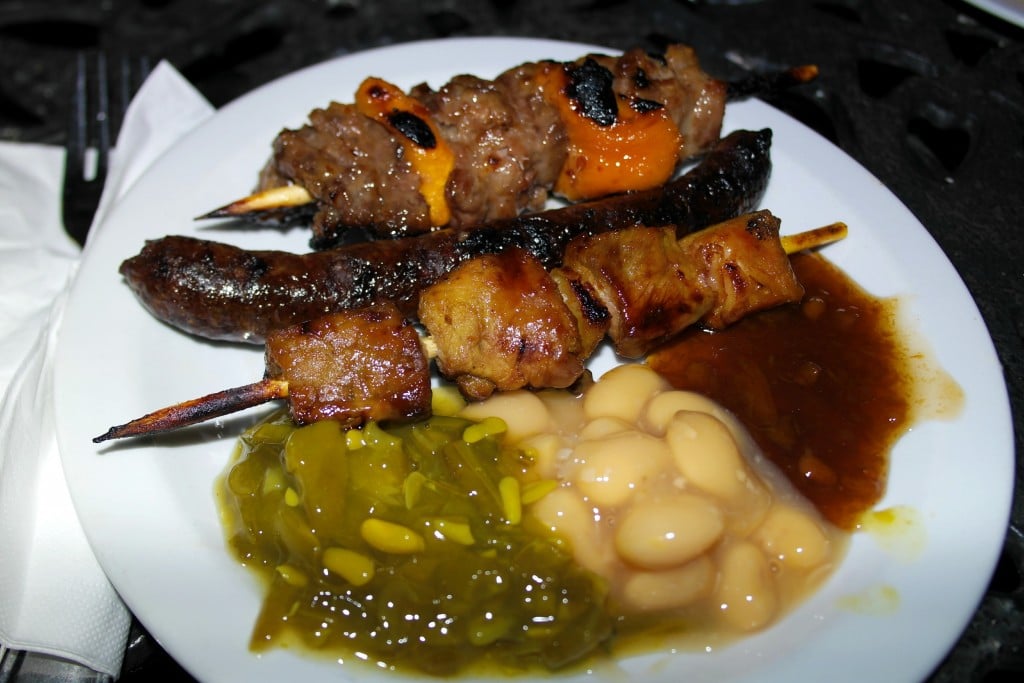Our First Meal in Cape Town
Good food and good wine has the ability to unite. To bring people together who otherwise might not be friends due to age, socio-economic, or other life differences. Happy taste buds and uplifted souls draw smiles to our faces that engage others by breaking barriers and inviting both laughter and conversation.
Our first meal in Cape Town did just that.
We were by far the youngest participants on our African Culinary Adventure. It was a difference that I was somewhat expecting due to the higher costs associated with a safari, but not to the extent that played out in the group’s demographics.
Please don’t misunderstand me. I get along fine with my parents and their friends down in The Villages (I’m refraining from using the term “elders”). I just wasn’t sure I would want to go on vacation with them. Especially not a safari in Africa. Now, we didn’t have a choice. We were there and so were they. Might as well make the best of it, right?
The path was dark as Chefs Sidney and Allison Bond led us along the winding walkway through the foliage to the braai for our first dinner.
Of course, we were moving at a snail’s pace as each brick uplifted by a rogue root had to be pointed out and spider webs batted away. “Great,” I thought to myself with an eye roll normally reserved for my parents. ”Can’t wait to see what tomorrow’s hike on Table Mountain looks like.”
At the end of the path the woods opened up to picnic tables, a pond, and a pier. Coals from the open braai (BBQ) sizzled in the background. Two smiling staff members from Zevenwacht Wine Estate waited with a half dozen bottles of wine ready to be drank. The pace picked up a bit as the group segregated between red and white drinkers. Mrs. G, of course, reached for the heaviest red she could find, and I, uncharacteristically, found myself pouring a Sauvignon Blanc. A chilled glass of white seemed to fit as a palate opener on a warm African night (not that I’ve ever experienced a warm African night before).
It only took a few sips for the wine to break the ice and conversation to pick up. Like a young person trying out a church for the first time, Mrs. G. and I were the hit of the show. Our older tour mates all wanted to know our story, especially when they learned that I was a writer. That’s one of the benefits of being a writer. Telling someone what I do normally draws interesting questions and engaging conversation, so much so that Sidney was barely able to get in a word to introduce the meal.
Our appetizer was an assortment of biltong, South Africa’s version of jerky. In traditional biltong, strips of meat – typically beef but wild game is also used – are cured in vinegar and spices (salt, pepper, coriander, and brown sugar) and then dried in a cool environment over a couple of days.
It was our first official taste of South African food with biltong ranging from dry to wet (a little rarer) and dried sausage. The sausage was tough to bite and chew but had a nice flavor reminiscent of boerwors (more on that later). The biltong, with its sweet, spicy, and vinegary undertones, was easier on the tooth and pleasant on the tongue. I ate so much that I almost didn’t save room for dinner. But I stopped myself. The aroma of the kabobs cooking on the open coal pit danced in the air and were too hard to ignore.
Dinner was an assortment of traditional Cape Malay kabobs that Sidney had prepared. The first was lamb belly skewered with slices of peach and grilled with a glaze of peach preserve. The heat from the grill seared the meat sealing in the delicious, fatty juices from the lamb and the preserves added a layer of sticky caramelization that delivered a unique texture to the succulent meat. The second kabob was traditional sosaties of beef and pork marinated in vinegar, apricot preserves, and Cape Malay curry spices and skewered with slices of apricot and onion. The sosaties were as good as they sound and have been a crowd pleaser at parties back home.
Of course there was boerwors because you can’t host a braai without South Africa’s national sausage. Boerwors resembles much of the ethnic makeup of the Cape with influences from the many immigrants that helped populate it (German, English, Malaysian, Dutch, etc). Think bratwurst and then add a sweet, fresh, and clean finish from the strong notes of the coriander, cloves, and nutmeg. The meats were served with traditional Cape Malay sides of chutney and pickled bean salads.
For desert, Allison prepared Seven Sisters Cake, which is fried cake dough tossed in an ice bath and finished with a sugar glaze. The bite was firm on the outside but soft on the inside. It was served with coffee and best when dipped in the coffee to bring more flavor to a simple desert.
We were truly united through food.
The fun of the dinner was comparing what we all thought of a cuisine that was so different anything most of us were used to and discussing the nuances of wine from a country that’s often written off as a lesser of the new world wine countries.
Our camaraderie continued to develop with each winery visit and each meal as we pushed our own culinary comfort zone and tried various game like oryx (best as a BBQ steak), springbok (awesome as a roasted shank), and kudo (not so good for biltong). And also from Sidney and Allison’s prodding that Mrs. G. and I could learn a great many lessons from our new older and wiser friends.
Now I Can Help You Travel to Africa like We Did!
The joy of our trip was getting to know Chefs Sidney and Allison, who are truly remarkable in their career as international chefs cooking in world-class restaurants from South Africa to Namibia, Dubai, Israel, and India. Together, they have cooked for world leaders and dignitaries including the Queen of England.
Beyond their knowledge of food, they are well versed on the countries they led us through (South Africa and Namibia). Sidney is a native South African and Allison lived there for many years. They have hearts to teach others about the world they’ve experienced and currently lead culinary tours in Africa and beyond.
The Wandering Gourmand is working with Sidney and Allison to help readers and community members enjoy a similar travel experience in Africa. This is a boutique tour that offer a glimpse into a country that larger tour groups cannot offer. You aren’t ushered through the sites like cattle, but instead enjoy an intimate experience exploring a new country. Sidney has also assured me that the demographics are usually much more varied than our trip.
Currently, the following dates are open for an African Culinary Experience:
- October 20-29, 2015
- April 17-26, 2016
- November 4-13, 2016
For more information, please visit my Tours page.















3 comments